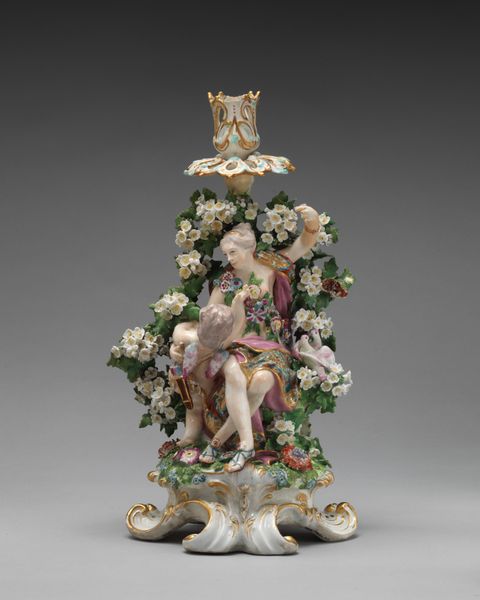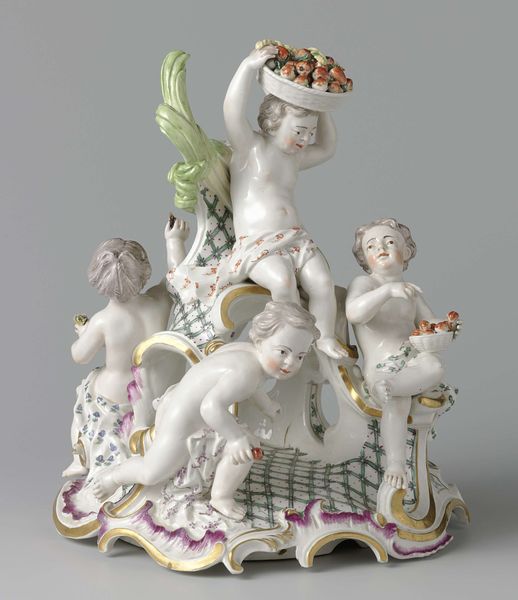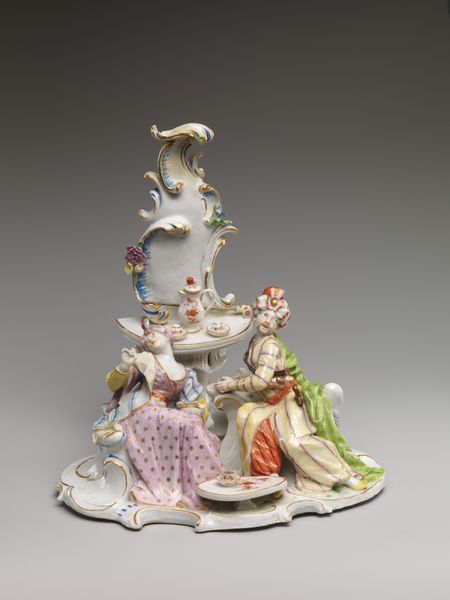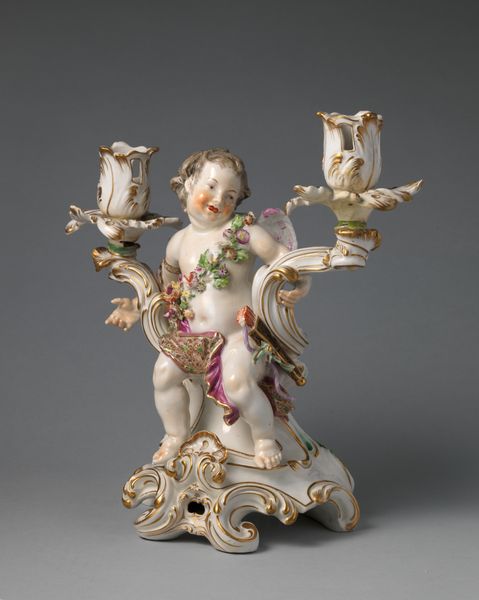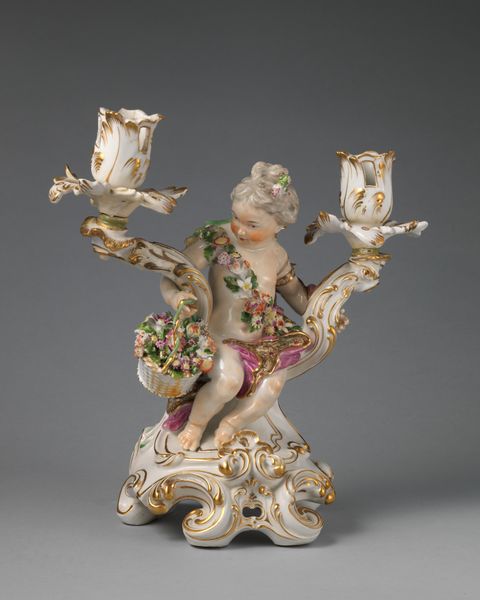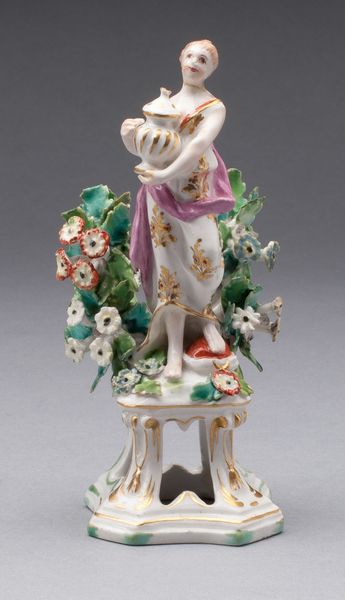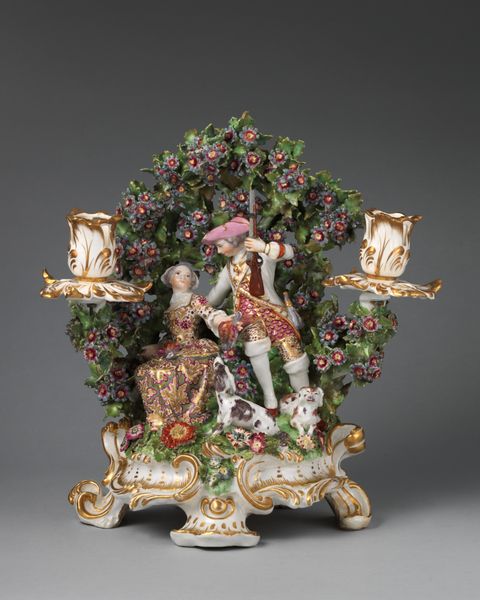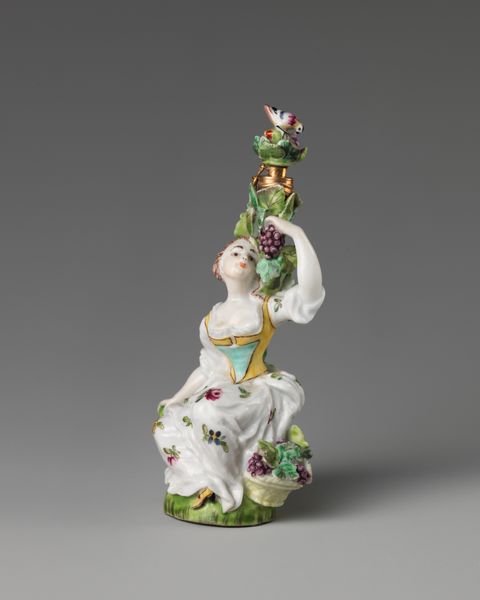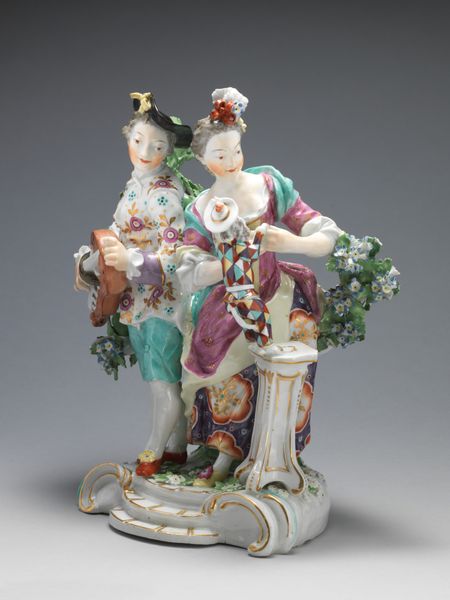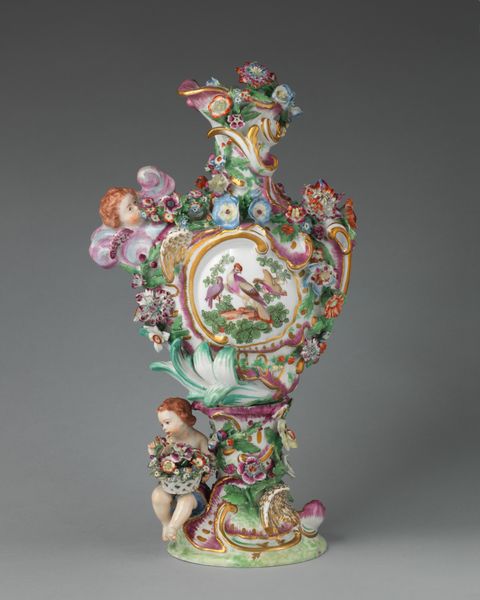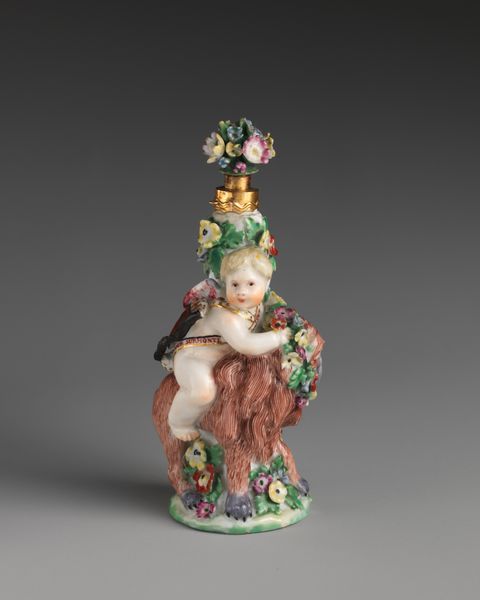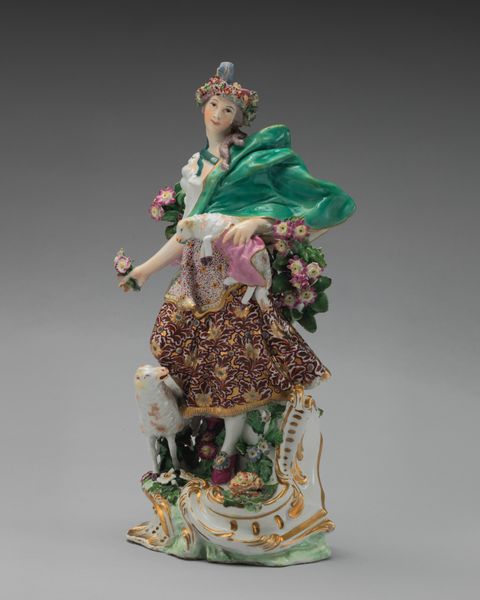
Venus, Cupid and the Swan candlestick (one of a pair) 1760 - 1770
0:00
0:00
ceramic, porcelain, sculpture
#
ceramic
#
porcelain
#
figuration
#
cupid
#
sculpture
#
decorative-art
#
rococo
Dimensions: Overall: 12 1/2 × 7 1/4 in. (31.8 × 18.4 cm)
Copyright: Public Domain
Editor: So, this candlestick sculpture, titled "Venus, Cupid and the Swan," made by the Chelsea Porcelain Manufactory between 1760 and 1770… I find the scene so delicate. It’s as though a classical myth has been transformed into porcelain filigree. What's your interpretation? Curator: Looking at this, I immediately consider the social context of its creation. Porcelain figures like these were highly prized objects within elite European society. They spoke of refined taste and significant wealth. Consider the rococo style; how do you see it reflecting social values or anxieties of the time? Editor: I guess the extravagance of it all makes sense. Everything is ornate, kind of playful but… a little distant from real life? Curator: Precisely. The piece embodies the ideals of courtly love and aristocratic leisure. Venus, Cupid, and the swan, a complex erotic symbol from mythology. Now, how do you think this sort of idealized representation affects the viewers and their understanding of art's purpose during that time? Editor: It’s definitely not “art for the masses," it is saying something about privilege and exclusion. But were pieces like these simply about displaying power? Curator: Good question. It's also important to consider how these objects were displayed and viewed, usually inside the private houses. They created intimate settings. Imagine them catching candlelight – the narratives about desire would have come alive, so, pieces such as this served as important points of cultural consumption and aspiration. Editor: I never thought about the viewing environment playing such an important part! Thanks! Curator: My pleasure, seeing the context behind objects often brings us closer to understanding people from the past and also how power can work within these visual objects.
Comments
No comments
Be the first to comment and join the conversation on the ultimate creative platform.
